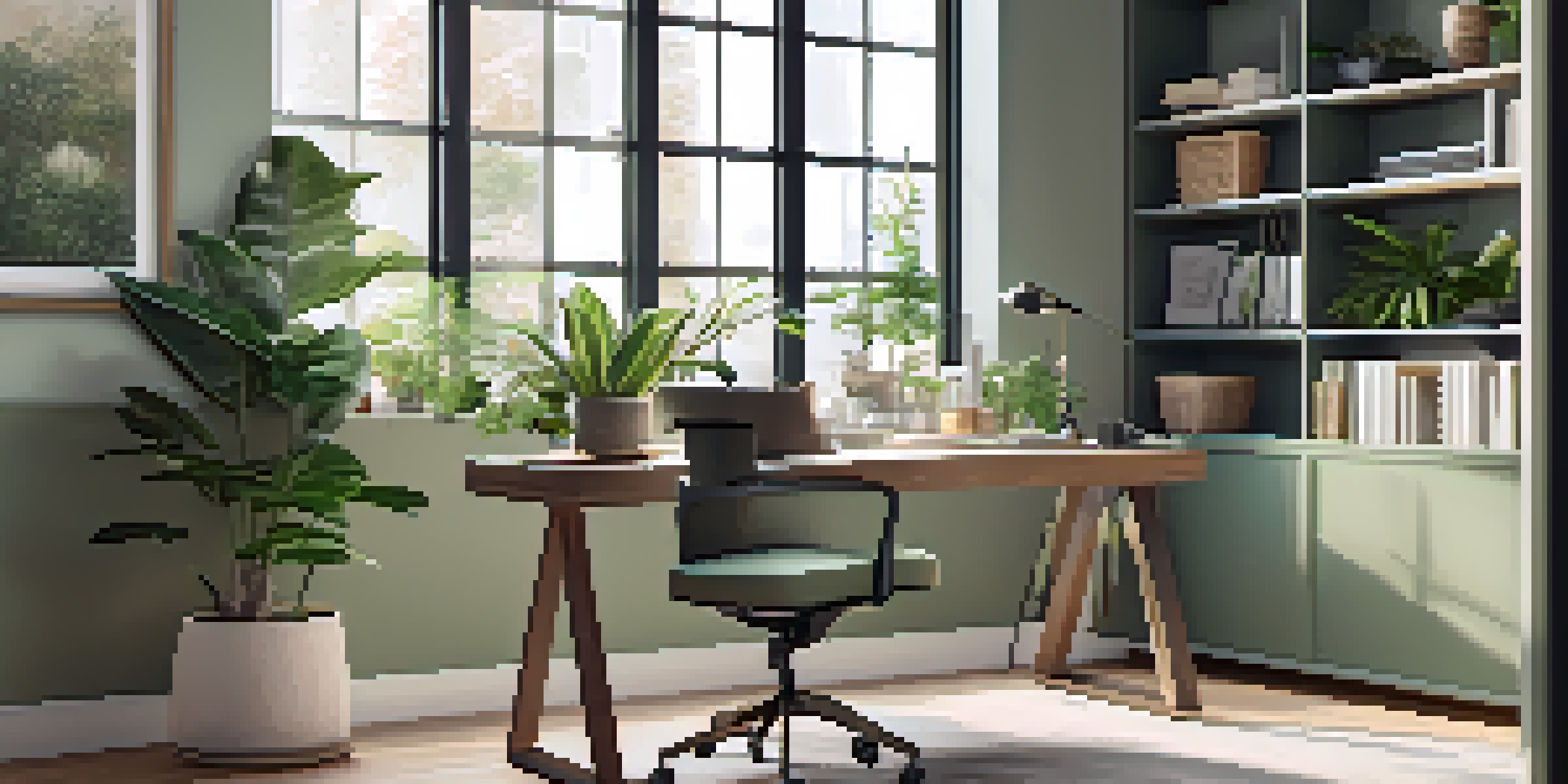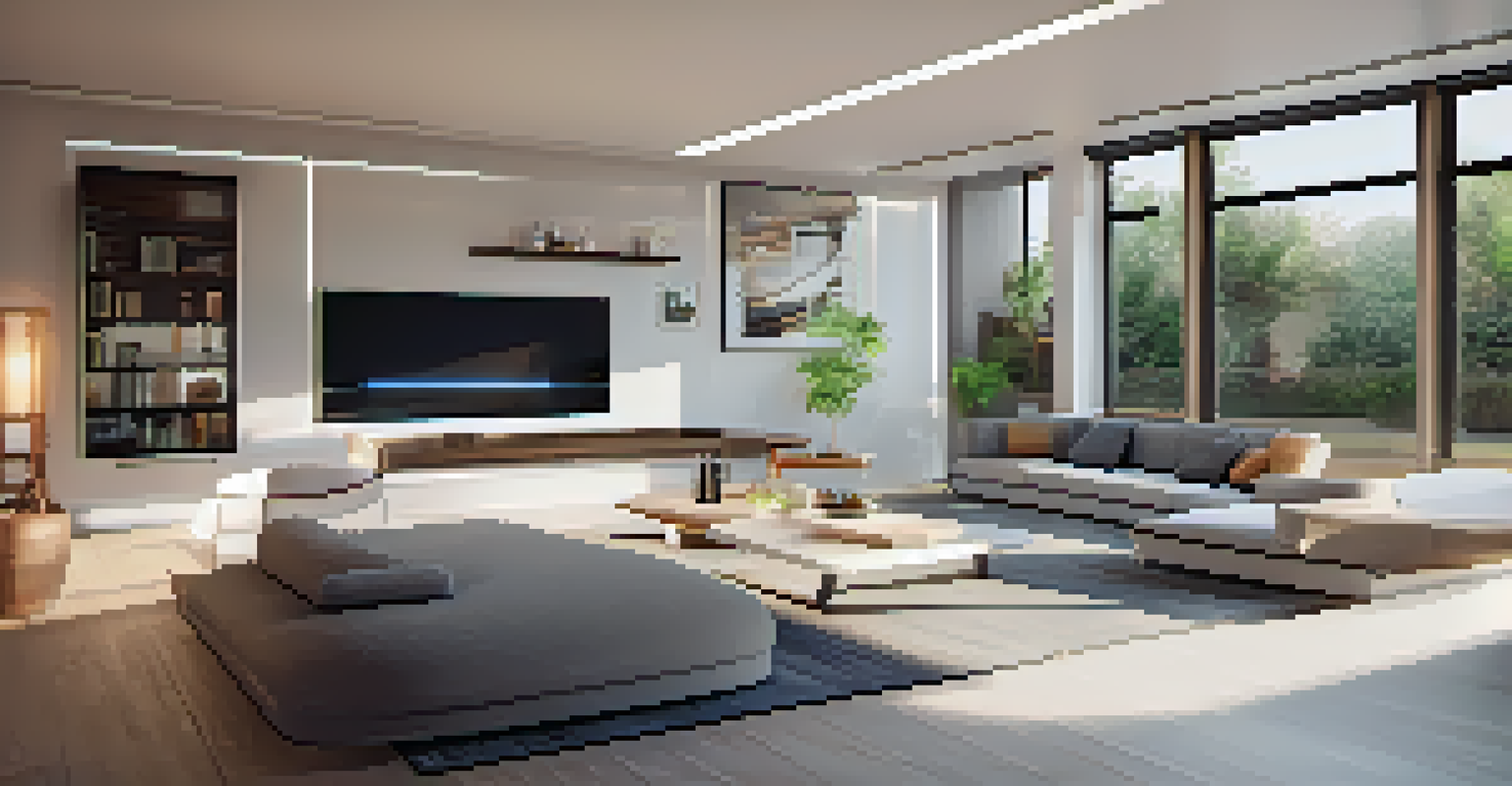The Shift to Telecommuting: Impacts on Housing Styles

The Rise of Telecommuting and its Popularity
Telecommuting has surged in recent years, especially following the pandemic. Many companies have embraced remote work as a viable option, allowing employees to work from the comfort of their homes. This change has not only altered daily routines but has also sparked a broader conversation about living arrangements and housing styles.
The future of work is not about where you work, but how you work.
As more individuals opt for telecommuting, the desire for home office spaces has grown dramatically. Homeowners are seeking layouts that accommodate workstations, leading to a demand for designs that blend functionality with comfort. This shift is reshaping how we think about our living spaces, emphasizing the importance of versatility in home design.
Moreover, with the flexibility of working from anywhere, many people are re-evaluating their geographic location. Some are moving away from urban centers to suburban or rural areas where they can find larger properties and more affordable living options. This trend underscores the significant influence of remote work on housing preferences.
Changing Preferences for Home Office Spaces
The need for dedicated home office spaces has become paramount for many telecommuters. Gone are the days of working from a cluttered kitchen table; now, individuals are looking for quiet, functional areas that enhance productivity. Homeowners are increasingly investing in custom-built offices or converting spare rooms to serve this purpose.

This shift has led to a rise in the popularity of open floor plans that can easily adapt to include workspaces. These designs often feature large windows for natural light and soundproofing elements to reduce distractions. This way, a home can seamlessly transition from a lively family space to a focused work environment.
Telecommuting Drives Home Design Change
The rise of remote work has transformed housing preferences, leading to increased demand for functional home office spaces and adaptable layouts.
Additionally, the emphasis on aesthetics in home office design cannot be overlooked. Many are opting for stylish furniture and decor that inspire creativity while maintaining professionalism. This blend of function and style reflects a broader trend in housing where personal taste meets practical needs.
Impact on Outdoor Spaces and Amenities
With more time spent at home, the desire for outdoor spaces has skyrocketed. Homeowners are now prioritizing gardens, patios, and balconies as extensions of their living areas. These outdoor spaces provide a necessary escape and a place for relaxation or informal meetings.
Home is not just a place, but a feeling; it should reflect our lifestyles and aspirations.
Incorporating outdoor amenities like fire pits, seating areas, and even outdoor kitchens has become increasingly common. These features not only enhance the home's appeal but also create environments conducive to both work and leisure. The idea is to blend indoor and outdoor living, fostering a balanced lifestyle.
This trend also speaks to the importance of wellness in design. Access to nature and fresh air is crucial for maintaining mental health, especially for those working long hours from home. As a result, homebuyers are seeking properties that offer these outdoor elements, shaping the future of residential architecture.
The Shift Towards Sustainable and Smart Homes
As people spend more time at home, there is a growing awareness of sustainability in housing. Many telecommuters are looking for eco-friendly options that reduce their carbon footprint. This demand is influencing builders to incorporate sustainable practices and materials into their designs.
Smart home technology is also becoming a staple in modern housing. Features like smart thermostats, energy-efficient lighting, and automated systems not only enhance convenience but also promote energy savings. This tech-savvy approach aligns perfectly with the needs of remote workers, who appreciate the efficiency these systems bring.
Outdoor Spaces Gain Importance
As people spend more time at home, there is a growing desire for outdoor areas that promote relaxation and enhance the living experience.
Ultimately, the shift towards sustainable and smart homes reflects a broader societal change. As telecommuting continues to shape our lives, the focus on environmental responsibility and technological integration becomes increasingly relevant in residential design.
The Role of Community and Neighborhood Design
As remote work reshapes individual housing preferences, it's also impacting community design. People are seeking neighborhoods that offer not just homes but a sense of community and accessibility. This shift highlights the importance of local amenities, such as parks, cafes, and coworking spaces, within residential areas.
Communities that prioritize walkability and access to nature are becoming more desirable. Homebuyers are looking for environments where they can easily connect with neighbors and engage in outdoor activities. This desire for community connection is influencing urban planners and developers to create more inclusive and interactive neighborhoods.
Moreover, the rise of telecommuting allows people to live farther from their workplaces, fostering a demand for diverse community designs. This transition is not just about individual homes but rather about creating vibrant neighborhoods that support a balanced lifestyle, combining work and leisure in a harmonious way.
Challenges in the Housing Market Amid Telecommuting
While the shift to telecommuting has brought about numerous benefits in housing design, it also presents challenges in the market. The increased demand for home office spaces and outdoor areas has led to rising property values in many regions. This trend can make it difficult for first-time buyers or those on a budget to enter the market.
Furthermore, the focus on specific housing features may lead to shortages in certain areas. For instance, homes with dedicated workspaces are becoming highly sought after, creating a competitive landscape. Buyers might find themselves in bidding wars, driving prices up even further and complicating the purchasing process.
Sustainability and Smart Tech Trends
There is a notable shift towards sustainable housing and smart home technology as telecommuters seek eco-friendly and efficient living solutions.
These challenges highlight the need for thoughtful planning and understanding of market dynamics. As telecommuting reshapes demand, developers and policymakers must adapt to these changes to ensure that housing remains accessible for everyone.
Future Trends in Housing Styles Post-Telecommuting
Looking ahead, the influence of telecommuting on housing styles will likely continue to evolve. As remote work becomes a permanent fixture for many, we can expect to see innovative designs that cater specifically to this lifestyle. Architects and designers are likely to focus on creating multifunctional spaces that accommodate both work and leisure seamlessly.
Additionally, the integration of technology in homes will continue to grow. As smart home devices become more advanced, they will play a crucial role in enhancing the telecommuting experience. Future homes may feature integrated systems that optimize both work efficiency and energy consumption, making them more appealing to buyers.

Ultimately, the future of housing styles is about adaptability. As our work habits and lifestyles change, so too will our homes. The challenge will be to create spaces that not only meet the needs of remote workers today but also anticipate the demands of tomorrow.